New Sony E Mount Full Frame “FE” Lenses announced!
In addition to the GORGEOUS Sony/Zeiss 35 1.4 FE lens that was announced (see my hands on first look here) Sony has announced a few other lenses for the FE system. Take a look below at what is coming as well as links to pre-order. All of these are for the full frame FE system (A7 series). So FOUR new lenses. Three primes and one SuperZoom. There are LOADS of lenses for the Sony System now, from super wide-angle to telephoto to Macro to the Zeiss Loxia line.
The Sony 28mm f/2 Lens – $448
This is a standard Sony lens. Not a Zeiss, not overly expensive. I’d say it is “mid priced” at $448. Even so, I bet it will be a great wide-angle for the FE system. Yep, this is a full frame lens. A fast 28mm f/2 for under $500 and a smaller size as well. Looking forward to seeing how good this one is. Pre-Order it HERE.
Official word from Sony:
The FE 28mm f/2 Lens from Sony is a full-frame compatible wide-angle prime lens for E-Mount mirrorless cameras. Its wide focal length and fast aperture make it a practical and versatile addition to your gear bag. Also compatible with APS-C format E-Mount cameras, it provides the angle-of-view equivalent to a 42mm lens in the 35mm/full-frame format.
Its optical design features Extra-low Dispersion glass elements which reduce chromatic aberrations and provide improved contrast. Also, aspherical and advanced aspherical elements minimize spherical aberrations and help to maintain the lens’ compact, lightweight form. Multi-coating on the ED glass elements reduce flare and ghosting and also improve overall image contrast and quality.
An internal focus system and a linear actuator autofocus mechanism provide fast and quiet focusing and make this lens ideal for both still shooting and video recording. The internal focus system also maintains the compact length of the lens during focus and does not rotate the front element. A uniquely designed 9-blade system creates a circular aperture which helps to create pleasing out-of-focus highlights.
The compact design of this lens is a great match for the compact E-Mount cameras and its robust build with dust and moisture resistant seals enable it to be used in less than optimal conditions. It is compatible with Sony’s Ultra-wide and Fisheye converter lenses for even wider perspectives.
Wide-Angle Prime Lens for Full-Frame E-Mount Cameras
This 28mm prime lens is designed for full-frame format E-Mount mirrorless cameras and is also compatible with the APS-C format cameras on which it provides the 35mm focal length equivalent of a 42mm lens. Its f/2 maximum aperture is effective in low light and enables shallow depth of field control.
Optical Design
Aspherical and Advanced Aspherical lens elements reduce spherical aberration and multi-coated Extra-low Dispersion glass elements minimize chromatic aberration and reduce ghosting and flare for sharper images with more contrast.
Internal Focus and Linear Actuator Autofocus Mechanism
Only the middle groups of the optical system move to achieve focus, so the overall length of the lens does not change. Other important benefits include fast autofocusing and a short minimum focusing distance. Also, the filter thread at the front of the lens does not rotate, which is convenient if you’re using a polarizing filter. The linear actuator AF system provides smooth and quiet AF action.
Circular Aperture
A unique 9-blade design keeps the aperture almost perfectly circular. Smoother, more natural out-of-focus highlights can be obtained as a result.
Compact, Robust Form Factor At less than 2.5″ long, this 28mm lens is a ideal companion for mirrorless E-Mount cameras and its dust and moisture resistant seals allow it to be used in less than ideal conditions.
——
The Sony 90mm f/2.8 Macro G OSS Lens – $1,098
I will make a prediction that this will be a stellar macro lens. A 90mm, which is perfect for Macro along with a nice design and build. Expensive but this guy should be gorgeous in performance. No hands on yet, but hope to soon. Pre-Order it HERE.
Official word from Sony:
Get up close and personal with the 1:1 magnification ratio of the full-frame compatible FE 90mm f/2.8 Macro G OSS Lens for Sony’s E-Mount mirrorless cameras. Optimized for macro shooting, this medium telephoto lens utilizes an aspherical element along with extra-low dispersion and super extra-low dispersion glass in order to create sharp imagery with minimal aberration. Also, it has a Nano AR Coating that suppresses reflections and allows for efficient light transmission for clear photographs.
Its maximum aperture of f/2.8 is effective when shooting in low light and allows for shallow depth-of-field focus. An internal focus system in which only the middle optical groups move when focusing provides fast autofocus action and a short minimum focus distance of 11″. Also, the lens does not extend when focusing and the front end does not rotate. The Direct Drive Super Sonic Wave AF motor employs piezoelectric elements oscillating at ultrasonic frequencies to drive the focus lens with accuracy and near-silence. The focus ring slides back and forth to select manual or auto focus and with a focus hold button and focus limiter switch, the lens offers precise control of where you place focus.
An optical image stabilization system uses gyro sensors to detect camera movement and quiet linear motors to shift the stabilization lens for blur control that is very helpful when shooting macro and/or in low light. Nine circular aperture blades create a unique diaphragm design that is almost perfectly circular throughout its aperture range and thus helps to create pleasing out-of-focus highlights. Finally, a handsome and sturdy build with a dust and moisture resistant design contributes to the overall quality and durability of this fine optic.
Full-Frame E-Mount Telephoto Macro Lens
A 90mm prime telephoto lens with 1:1 macro capability, it provides an f/2.8 maximum aperture for low light effectiveness and shallow depth of field control. Compatible with full-frame E-Mount cameras, it can also be used on APS-C E-Mount cameras with an angle of view equivalent to a 135mm lens in the 35mm/full-frame format.
Internal Focusing
Only the middle groups of the optical system move to achieve focus, so the overall length of the lens does not change. Other important benefits include fast autofocus and a short minimum focusing distance. Also, the filter thread at the front of the lens does not rotate, which is convenient if you’re using a polarizing filter.
Focus Hold Button
Once you’ve adjusted focus to where you want it, pressing this button on the lens barrel will keep the lens locked to that focusing distance. The preview function can also be assigned to this button through the camera’s custom settings.
Focus Range Limiter
This function allows you to set a limit on the focusing range which can save you time during AF operation as the lens will not ‘hunt’ through the entire focusing range. On this macro lens, three ranges are supported: Full, infinity to 19.7″ and 11″ to 19.7″.
Sliding Focus Ring
The focus ring slides back and forth to select manual or auto focus.
Direct Drive Super Sonic Wave AF Motor
Quiet, precise DDSSM focus drive employs piezoelectric elements oscillating at ultrasonic frequencies to drive the focus lens groups. In this case two floating focus groups are driven by independent DDSSM systems for precision positioning of the relatively heavy lenses required for macro photography. The system is remarkably quiet, making it ideal for animal and insect photography, as well as for video recording. It also improves the precision of “focus wobble” employed to achieve optimum focus when shooting movies.
Lens-Based Optical Image Stabilization
Gyro sensors built into the lens detect even the slightest movement, and the stabilization lens is precisely shifted to counteract any image blur that might occur. The use of precision, quiet linear motors and technology inherited from high-end Sony professional camcorders results in exceptionally quiet, effective image stabilization that contributes to high-quality movies as well as stills.
Aspherical Lens Elements
Aspherical lens design dramatically reduces spherical aberration while also reducing lens size and weight. Specially shaped aspherical elements near the diaphragm restore alignment of light rays at the image plane, maintaining high sharpness and contrast even at maximum aperture and can also be used at other points in the optical path to reduce distortion.
ED and Super ED Glass
Extra-low Dispersion and Super Extra-low Dispersion glass elements reduce chromatic aberration for sharp, color-accurate images.
Nano AR Coating
Effectively suppress reflections that can cause flare and ghosting with Sony’s original Nano AR Coating technology. This nano-structure allows accurate light transmission, contributing to high-quality images, even more so than lenses with coatings that use an irregular nano-structure. The reflection suppression characteristic of the Nano AR Coating is superior to conventional anti-reflective coatings, providing a notable improvement in clarity, contrast, and overall image quality.
Circular Aperture
When changing your aperture to defocus the background, the light sources appear blurred. This ‘bokeh’ effect of the blurred background can be enhanced with circular aperture blades used in this lens. Its unique design keeps the aperture almost perfectly circular from its wide-open setting to when it is closed by 2 stops. Smoother, more natural defocusing can be obtained as a result.
Dust and Moisture Resistant Design
A solid and handsome design is complemented with dust and moisture resistant sealing enabling this lens to be used in the field as well as in-studio.
———
The Sony 24-240mm f/3.5-6.3 OSS Lens – $998
This looks like it will have quite a few fans as an all purpose superzoom. To those who like a full on zoom packed with wide reach, this one may do the trick. At $998 and with OSS, this one could be a great buy for that ONE LENS and done crowd. Pre-order it HERE.
Official word from Sony:
The FE 24-240mm f/3.5-6.3 OSS Lens from Sony is a full-frame compatible E-Mount telephoto zoom lens with the versatility to stretch from true wide-angle to super telephoto perspectives. Its advanced optical design includes 5 aspherical elements and 1 ED glass element, achieving high-quality performance with reduced chromatic and spherical aberrations in a compact design. Optical SteadyShot image stabilization facilitates sharper imaging in low light situations and when shooting at long telephoto lengths.
An internal focus system means that only the central optical elements move during focus which enables faster autofocus and a shorter minimum focus distance. Also, the lens does not extend during focus and the front element does not rotate which is more practical, especially if using a polarizer filter. A linear AF motor drive also helps to achieve fast autofocus and a circular 7-blade aperture helps to create smooth and pleasing out-of-focus highlights. Like all other FE lenses, the physical design is dust and moisture resistant.
Full-Frame E-Mount Telephoto Zoom Lens
Designed for Sony full-frame E-Mount mirrorless cameras, this lens provides a versatile 24-240mm focal length range. When used on APS-C format E-Mount cameras the lens provides the 35mm focal length equivalent of a 36-360mm lens.
Optical Image Stabilization
Optical SteadyShot image stabilization reduces the blur that accompanies camera shake when shooting in low light or at long telephoto lengths.
Internal Focus System and Linear Motor Drive
An internal focus system with a linear motor drive provide fast and precise autofocus as well as maintaining the length of the lens during focus. The lens’ front elements do not rotate during focusing, which is convenient when shooting with certain filters and lens hoods.
Optical Design
Five aspherical lens elements and one Extra-low Dispersion glass element control chromatic and spherical aberrations leading to sharp, high-contrast, color-accurate images.
Robust and Compact Build
At just 4.75″, this is a very compact lens for such a broad focal length range and its dust and moisture resistant design allow you to confidently use this lens in inclement weather and less than ideal conditions.
———–
The Sony-Zeiss Distagon 35 1.4 FE Lens – $1598
If you did not see my full hands on first report with this beauty, take a look HERE. It is a beautiful lens. In fact, for IQ, the best 35mm I have ever used (and I also have the Loxia on hand). Expensive at $1598, large for a mirrorless prime, but man..what a gorgeous lens. Nice solid build, not too heavy, and a gorgeous rendering. See my report HERE. All details are there!

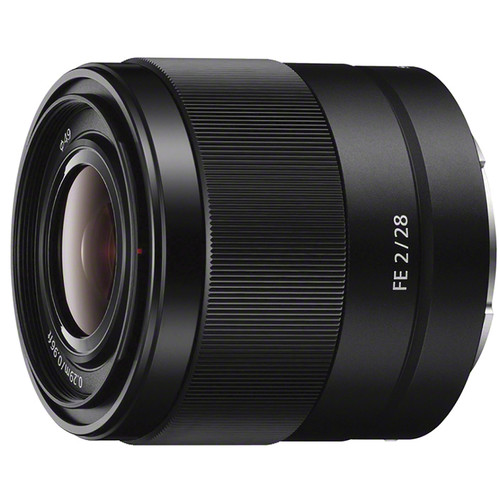
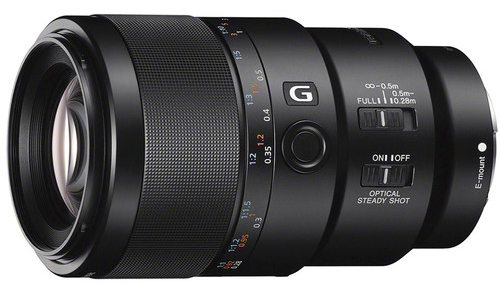
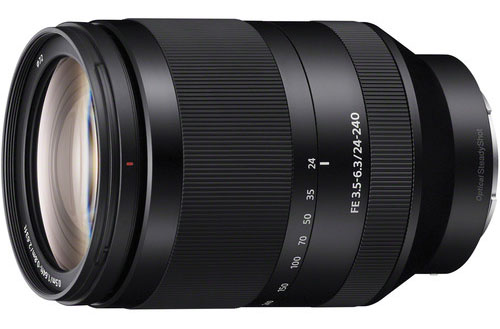
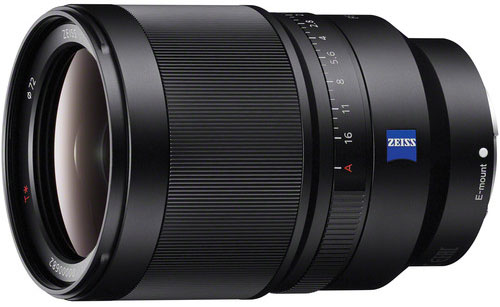

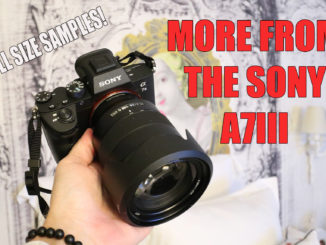
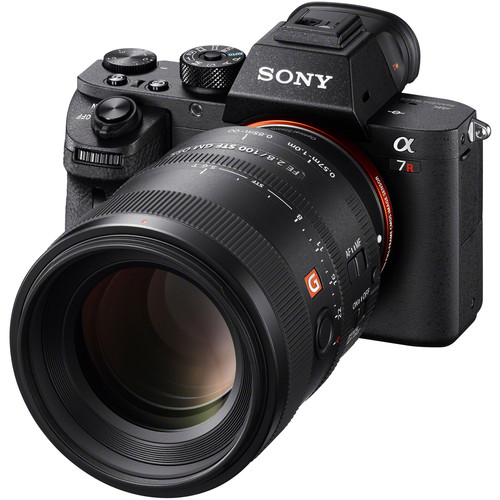
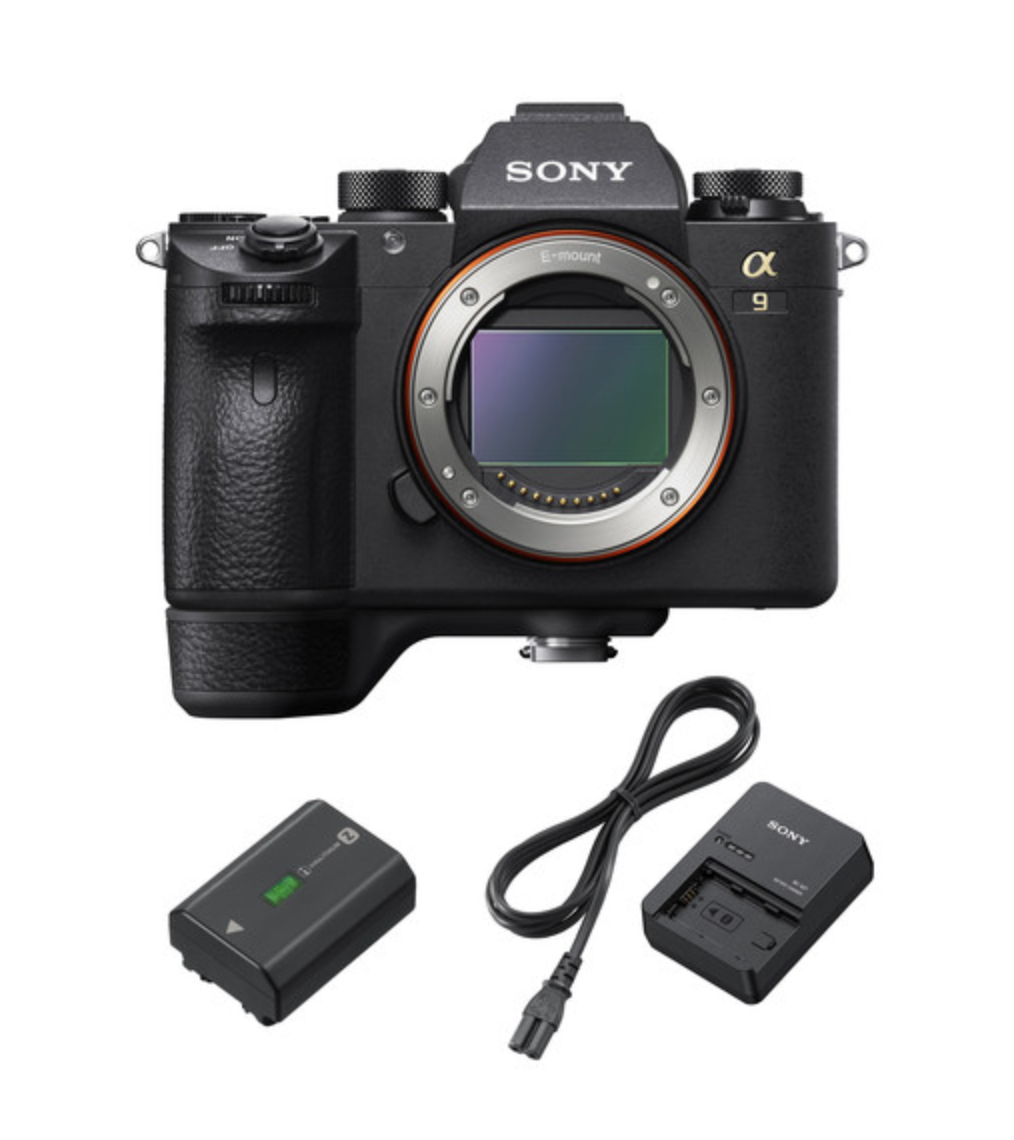
Steve, which Sony FE lenses (and other manufacturer’s) work on a6000 body. Some do, some don’t. What is the trade-off? Did you try any? What were the results?
THEY ALL work on the A6000 but a 35mm in full frame will be more like 50mm on the A6000. Full frame lenses work great on APS-C but APS-C lenses will not work well on full frame.
I want the 28mm NOW!!!!
UHG!!! I want it too!!!
Steve, have you assessed the Sigma ART series lenses for the a7 ll? I’m curious about the Sigma 24-105 compared to the Sony 24-70. Also, I wonder about the quality of the new 24-240 lens …kit lens quality or better?
There are no FE (full frame) Mount ART series lenses that I am aware of. All need adapters and adding a large adapter to a large lens is not appealing to me 🙂
Forget the ART SLR lenses! I have the 35mm 1.4 and LA EA4 adapter and it is hulking big and not that responsive (S-L-O-W auto focus). Stay away. Get the Sony lenses! in fact, if you want wide, that new $400 28mm is looking sweet from what I am reading and seeing online! Save the $$
I’m not so much one of the “ONE LENS and done crowd” more “Jekyll and Hyde”. 24-240 for every day, fits most conditions use and 28 f/2 for when a wide compact, lightweight, reasonably fast and inconspicuous lens is required, that’s for me.
i have difficulty to choose which 35/1.4 to buy. Whether i should go for the ZM or the FE. i have both leica m and sony a7r.
The FE will not work on your leica but the ZM will work on both your Leica and Sony.
how about when comparing 35lux and the newly released 35/1.4 zm? still the best 35mm you have ever used??
Many of these recent lens introductions are getting awfully big, and cameras heavier with 5 axis stabilization. I totally understand this for the physics and mechanics involved to achieve certain goals, but I also hope that Sony continues to innovate without forgetting those of us who came to Sony in the first place primarily due to the super compact and lightweight quality options available for camera and lens (especially full frame).
The A7II and 35 1.4 (which is the largest lens of the FE primes) is still MUCH smaller than say a 5D or D800 and equivalent lens.
Smaller but not all that much lighter …. 600g+630g = 1230g vs. 980g + 601g = 1581g
So about 3/4 of a pound more total weight…. for that you get higher resolution 4 times the battery power and built in flash for a little fill when you need it…
Nikon has 20mm, 28mm, 35mm, 50mm and 85mm F1.8 lenses all at around 300g except the 50 which weighs 185g…. all with great IQ and some water resistance.
But don’t get me wrong, I have an A7S and am ecstatic that Sony has begun to fill in the lens lineup as promised. This system has wonderful capabilities and IQ..and I love the ability to use various lenses with adapters…. but just don’t get this system for the weight savings… they aren’t all that great.
…. the 1581g was the D810 with battery and the Nikon 35mm F1.4….
Well then something of off, as the D810 and 35 1.4 is MUCH larger, MUCH bulkier and VERY heavy. The Sony setup is not. I have an 810 and 35 coming to test, so will compare them in size and weight. Take a look at this:
http://camerasize.com/compare/#579,557
A D810 and Nikon 35 1.4 is 3 1/2 lbs. The Sony A7II and Zeiss 35 1.4 is 2.7lbs. Most from the lens as the lens weighs more than the body does. That is NEARLY a alb difference. But look at the body sizes above at hoe much fatter, larger and wider the Nikon is over the Sony. WAY too much for every day use.
ITS HUGE – http://camerasize.com/compare/#579,557
You lose the sleek body. You lose the ability to use TINY lenses and have a SMALL setup (A7II and Loxia is TINY in comparison) – 24 vs 36MP? Id take 24 ANYDAY over 36 as that is overkill for anyone, it really is. You can print WALL size from an A7II and have gorgeous results. But usability wise the A7II is so much more pleasurable to shoot due to its size, EVF, and ability to use so many cool lenses. Canon Dream Lens, Noctilux, Loxia lenses, native, etc.
So if both were priced the same I’d still take the Sony system ANY DAY, the A7II. The D810 will kill your wrist with an all day adventure.
Also, D810 and Nikon 35 1.4 – $4600+ – A7II and Zeiss – $3300, $1300 less. So smaller, lighter, IMO a better lens and the ability to really size it down, like with the new 28 f/2 or Loxia line.
I don’t understand this comment. A7R + the new 35/1.4 is 1095g. That camera has the exact same sensor as the D800. D800 with similar Nikkor is 486g more, that’s more weight than the A7R body itself!!!
And with the A7R you get the option to mount a Loxia 35/2 (total weight ca. 750g), or the Sony Zeiss 35/2.5 (total weight ca. 600g). Those are incredibly low figures, much lighter than even the APS-C Nikon DX.
I don’t understand your comment Mike. He was saying A7 ii not the R.
I’m very much interested in 28mm f2. I’ve been considering this focal length for some time. Looking forward for your review, Steve! It’s either this or voigtlander 28mm f2
I have been waiting for a telephoto prime. This looks like a beast unfortunately. Hope its not too heavy. Steve, will you be getting this soon for testing?
Putting out a 90mm macro before a tele portrait lens?
Seems a little backwards to me, but maybe… The A7 has a large macro shooter following?
I’m kind of old school in that I tend to judge a camera lens system as a whole by how good the portrait lens(es) is.
Hopefully there’s a nice, newly designed Zeiss 85/1.4 & 90/2 lurking just around the corner.
When I had my Canon 5Dmkii, I used the 100mm 2.8 macro as a portrait lens with amazing results. Would be nice if I could use the 90mm for both as well.
You can use any lens to take portraits. Doesn’t make it a portrait lens- optimized for portraits.
This reminds me of Fuji’s X series initial launch, which included a 60mm macro instead of a tele/portrait lens. That lens has become the most unloved lens in the Fuji lineup and Fuji themselves admitted that putting out a macro lens first was a mistake.
I guess what I’m trying to say is: Everyone shoots portraits/people.
Not everyone shoots macro, and even fewer buy specialized lenses to do so.
It just seems backwards.
My guess is that a macro lens is much easier(and probably cheaper) to design & build vs an exceptional portrait lens.(which would explain why We’ve only seen 2(sigma 85 & Fuji 90) in the nearly a decade)
But I’d bet Zeiss is working one as we speak. They’re long overdue on a tele portrait lens.
What company is producing these new “SONY” lenses?
Sony.
what will you choose if you can only get one lens, zm 35/1.4 or fe 35/1.4~
given that u have both leica m and sony a7 series. plus u also have varies 35mm leica lenses
thanks in advance
For the A7s and A7II? No contest, the FE as it is a native lens and the IQ, AF, video performance (did some low light video at 1.4 and the Af was so good AND the quality was so nice). Best IQ I have seen from a 35 1.4 type of lens, or any 35 for that matter.
Are these from the Minolta holdings Sony purchased? If so, should be great as Minolta always made exceptional glass.